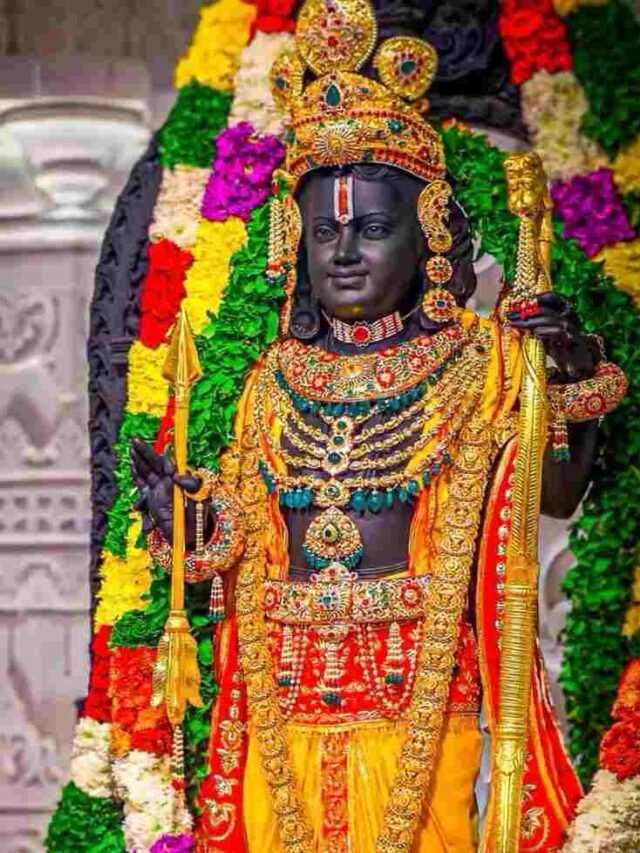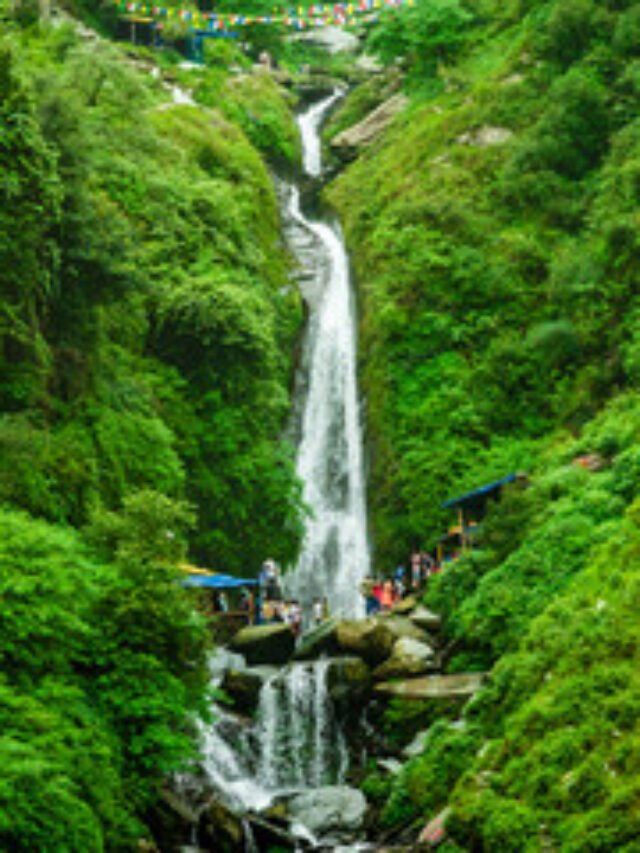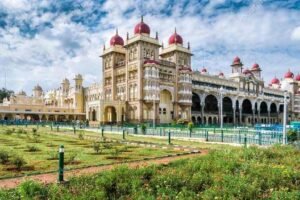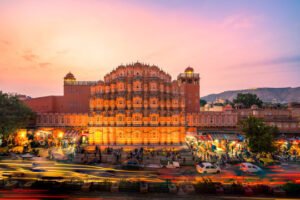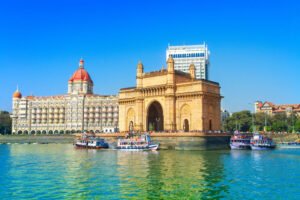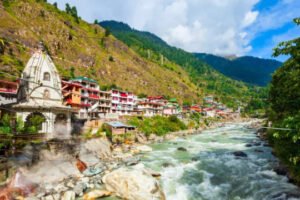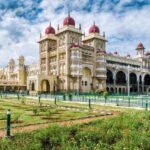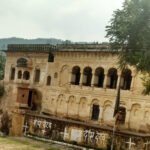Ayodhya tourist places: Top 10 Tourist Places to Visit in Ayodhya
Ayodhya tourist places: Ayodhya, a city located in the northern Indian state of Uttar Pradesh, holds immense religious significance and is often regarded as one of the holiest sites in Hinduism. Renowned as the birthplace of Lord Rama, a major deity revered throughout the religion, Ayodhya is steeped in mythology and historical importance. The legend of Lord Rama and the epic Ramayana permeates the very essence of this sacred city, attracting millions of pilgrims and tourists alike every year.
The cultural heritage of Ayodhya is rich and diverse, characterized by its ancient temples, vibrant festivals, and traditional rituals. Visitors can explore an array of architectural marvels that reflect both the historical importance and spiritual ambience of this city. Notable landmarks include the Hanuman Garhi temple, the Nageshwarnath temple, and several other deities’ shrines that contribute to its religious fabric.
In recent years, Ayodhya has gained renewed attention as a burgeoning tourist destination, with investments aimed at enhancing infrastructure and facilities for travelers. The government’s initiatives to promote Ayodhya as a center of tourism focus not only on its religious aspects but also on its cultural and historical relevance. This revival is evident in the development of new amenities, improved connectivity, and the organization of cultural events aimed at showcasing Ayodhya’s unique heritage. The ongoing restoration of ancient temples and sites is also helping to reinstate Ayodhya’s prominence on both national and international travel itineraries.
As Ayodhya continues to evolve, it remains a captivating destination that invites exploration into its sacred roots while offering modern conveniences for visitors seeking to experience its historical legacy. The blend of spirituality and cultural richness makes Ayodhya a truly unique place to visit, drawing the attention of many who seek to connect with the historical and religious narrative associated with Lord Rama.
Top 10 Tourist Places to Visit in Ayodhya
Ayodhya Tourist Places: Ayodhya’s Ram Mandir

Ayodhya, a city steeped in ancient history and profound religious significance, holds a special place in the hearts of millions of Hindus worldwide. At the heart of this sacred city lies the magnificent Ram Mandir, a testament to unwavering faith and a symbol of cultural resurgence. This guide will provide you with all the essential information you need to plan your pilgrimage to this revered shrine.
The Historical Significance of Ram Mandir
The Ram Mandir stands on the site believed to be the birthplace of Lord Rama, the revered deity of Hinduism. The construction of the temple has been a long and arduous journey, marked by centuries of legal and political battles. The recent inauguration of the magnificent structure marks a momentous occasion in Indian history, fulfilling the aspirations of countless devotees.
Architectural Marvel: The Ram Mandir Complex
The Ram Mandir is an architectural masterpiece, showcasing a blend of traditional Indian styles with contemporary design elements. The temple complex encompasses several key structures:
Garbhagriha (Sanctum Sanctorum): The innermost sanctum houses the principal deity, Lord Rama, along with his consort Sita and brother Lakshmana.
Nartana Mandapam: A grand hall dedicated to traditional Indian dance performances.
Yagna Shala: A spacious area for conducting religious rituals and ceremonies.
Museum: Showcasing artifacts and relics related to the history of Ayodhya and the Ram Mandir.
Langar Hall: Provides free meals to devotees and visitors.
Planning Your Visit
Best Time to Visit: October to March is considered the ideal time to visit Ayodhya, as the weather is pleasant and comfortable.
Reaching Ayodhya: The city is well-connected by air, rail, and road. The nearest airport is Chaudhary Charan Singh International Airport in Lucknow, while the nearest railway station is Ayodhya Cantt.
Accommodation: Ayodhya offers a range of accommodation options to suit various budgets, from budget-friendly guesthouses to luxury hotels.
Getting Around: Auto-rickshaws and taxis are readily available for local transportation within the city.
Ayodhya Tourist Places: Hanuman Garhi Temple
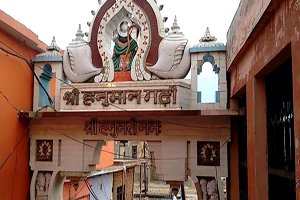
Hanuman Garhi Temple is a revered religious site situated in the heart of Ayodhya. Renowned for its distinct architectural style, the temple is dedicated to Hanuman, the monkey god, who is considered a symbol of strength and devotion in Hindu mythology. This temple not only exhibits a unique blend of ancient artistry and spirituality but also exudes a profoundly peaceful ambiance that attracts countless devotees and tourists each year.
The legends surrounding Hanuman Garhi are integral to its significance. It is believed that the temple was constructed on a site where Hanuman, the devoted follower of Lord Rama, once rested. Local folklore suggests that this shrine serves as a protective fortress for Ayodhya, ensuring the safety and prosperity of its inhabitants. Visitors are welcomed to participate in various cultural rituals, which include daily prayers, aarti, and special ceremonies during festivals. These practices enhance the spiritual atmosphere and provide pilgrims with a deeper understanding of the temple’s devotion and reverence.
Reaching Hanuman Garhi Temple is quite convenient. The temple is well-connected by road, with regular bus services and auto-rickshaws available from the city center. Moreover, the nearest railway station, Faizabad Junction, is only a short distance away. Given its popularity, accessibility is an essential factor contributing to the temple’s visitation numbers.
The best times to visit Hanuman Garhi Temple are during early morning or late evening hours. Visitors often experience a serene ambiance during these times, allowing for introspection and spiritual connection. In conclusion, the harmonious blend of architecture, legend, and ritual makes Hanuman Garhi Temple a must-visit destination for anyone traveling to Ayodhya, offering both tranquility and a profound sense of faith.
Ayodhya Tourist Tlaces: Nageshwarnath Temple

The Nageshwarnath Temple is a revered religious site located in the holy city of Ayodhya, known for its deep-rooted significance and rich historical legacy associated with Lord Shiva. This temple, believed to have been established by Lord Rama’s son, Kush, holds a special place in the hearts of devotees and attracts pilgrims from across the country. The architectural style of the temple showcases intricate artistry and craftsmanship reflective of traditional Indian temple architecture, characterized by impressive stone carvings and a large, ornate shikhara (tower) that dominates the skyline.
One of the unique features of Nageshwarnath Temple is its holy ‘Naga’ (serpent) images, which are found throughout the complex. These representations symbolize various aspects of Lord Shiva’s divine nature, as well as his association with the divine energy believed to be responsible for cosmic balance. Each year, the temple comes alive during numerous festivals, the most significant of which is Maha Shivaratri, characterized by grand celebrations, special prayer rituals, and an influx of devotees who participate in night-long vigils in honor of Lord Shiva.
For those planning a visit, the Nageshwarnath Temple is situated in the tranquil outskirts of Ayodhya, making it easily accessible to visitors. The temple is open to the public for darshan from early morning until late evening, providing ample opportunities to experience its spiritual ambiance. It is advisable to check local timings during festive seasons, as these may vary. Overall, a visit to the Nageshwarnath Temple not only offers a chance to witness its exquisite architecture but also provides an enriching experience of cultural and spiritual heritage that Ayodhya embodies.
Ayodhya Tourist Places: Tulsi Smarak Bhawan

Tulsi Smarak Bhawan stands as a significant tribute to the revered poet Tulsidas, who is best known for his epic poem, the Ramcharitmanas. Located in the holy city of Ayodhya, this memorial not only celebrates Tulsidas’s literary contributions but also serves as a cultural hub that reflects the ethos of Lord Rama’s teachings. Visitors to the Bhawan are greeted by a meticulously designed structure that showcases artistic representations inspired by Tulsidas’s work, highlighting various scenes from the Ramayana.
The architectural design of Tulsi Smarak Bhawan blends traditional Indian artistry with modern influences. This creates an inviting atmosphere that draws locals and tourists alike, allowing them to immerse themselves in the rich cultural heritage of Ayodhya. The Bhawan features intricate carvings and murals that depict significant events from Tulsidas’s life, making it an educational experience for those interested in classical literature and spirituality.
Throughout the year, Tulsi Smarak Bhawan hosts numerous cultural events, including poetry readings, seminars, and musical performances that revolve around the themes of devotion and spirituality as portrayed in the Ramcharitmanas. These events not only enrich the visitor experience but also promote a greater understanding of Tulsidas’s work and its relevance in contemporary society. Tourists can expect an engaging and reflective atmosphere, ideal for contemplation and learning.
In addition to the cultural programs, the Bhawan acts as a centerpiece for various community gatherings, fostering a sense of unity and cultural pride among locals. A visit to Tulsi Smarak Bhawan is not just a trip to a historical site; it is an opportunity to connect with the profound literary and spiritual legacy of Tulsidas, making it a must-visit destination in Ayodhya.
Ayodhya Tourist Places: Saryu River Banks

The Saryu River, flowing gracefully through Ayodhya, holds profound religious significance in Hindu culture. Revered as a sacred waterway, it is often associated with various mythological events and is believed to have purifying properties. The banks of the Saryu River serve as a spiritual retreat for devotees and tourists alike, creating a serene environment where they can connect with nature and their faith. Visitors come to perform rituals and ceremonies, drawing from the rich traditions that characterize this ancient city.
The experience at Saryu River is enriched by the myriad of activities available. Pilgrims and tourists frequently partake in rituals like bathing in the river, which is thought to cleanse the soul. The early morning and evening aarti (prayer ceremony) held along the riverbanks is a mesmerizing spectacle that draws many, showcasing the harmony of spirituality and natural beauty. These ceremonies not only highlight the religious aspect of the Saryu River but also provide visitors with an opportunity to partake in the age-old traditions that define Ayodhya.
For those seeking relaxation, the banks offer picturesque spots perfect for picnicking or simply enjoying the breathtaking views. The tranquil ambiance is complemented by the sound of flowing water, making it an ideal location for reflection and unwinding. Furthermore, boat rides on the river present a unique perspective of the area, allowing visitors to appreciate the enchanting landscape from the water. As the sun sets over the Saryu, the sky transforms into a canvas of vibrant colors, making it a sought-after moment for photography enthusiasts and nature lovers. Thus, the banks of the Saryu River not only serve as a spiritual hub but also as a beautiful retreat reflecting the essence of Ayodhya.
Ayodhya Tourist Places: Kanak Bhawan

Kanak Bhawan is a revered temple located in the sacred city of Ayodhya, dedicated to Lord Rama and his consort, Sita. The temple is notable for its stunning architectural beauty, embodying the essence of traditional Indian temple design. Constructed in the 19th century by the ruler of the princely state of Rewa, this landmark exhibits a distinctive style that reflects the rich cultural heritage of the region. Its intricately carved pillars, majestic domes, and vibrant frescoes serve as a testament to the artistic mastery of the artisans of that era.
One of the most striking features of Kanak Bhawan is its elaborate interiors, which are adorned with exquisite paintings depicting various episodes from the Ramayana. The temple showcases multiple delicate motifs symbolizing devotion, love, and righteousness. Visitors can observe the beautifully sculpted idols of Lord Rama and Sita, which are embellished with precious ornaments, further enhancing the spiritual ambiance of the temple. The serene atmosphere found within the walls provides a perfect backdrop for devotees to express their reverence and devotion.
Historically, Kanak Bhawan holds importance as it is believed to be the place where Lord Rama was welcomed and where his marriage to Sita took place. Throughout the years, the temple has become a hub for pilgrims, who travel from far and wide to pay homage at this sacred site. For those planning a visit, it is essential to note that the temple is open to devotees and tourists alike from early morning until late evening. The temple offers facilities for visitors, ensuring a comfortable experience while exploring the spiritual, cultural, and artistic heritage embodied within its walls. Overall, Kanak Bhawan stands as an iconic representation of Ayodhya’s timeless devotion and architectural magnificence.
Ayodhya Tourist Places: Chhoti Devkali Temple: A Vibrant Spiritual Destination

Chhoti Devkali Temple, nestled in the heart of Ayodhya, is a lesser-known yet captivating pilgrimage site that draws attention for its vibrant spiritual atmosphere. This sacred temple is dedicated to the goddess Devi Kali, who is revered for her power to destroy evil and bestow strength upon her devotees. The temple’s architecture, though modest, exudes a charm that encapsulates the essence of traditional Indian temple construction. Visitors are often struck by the intricate carvings and serene surroundings that enhance the temple’s holy ambiance.
The history of Chhoti Devkali Temple is steeped in local legend and devotion. According to folklore, the temple was established centuries ago and has been a site of worship for countless devotees seeking blessings for courage and protection. The temple gains particular significance during various festivals, especially during the auspicious occasion of Navratri when devotees gather in large numbers to offer prayers and participate in vibrant celebrations. The temple comes alive with chants and prayers, creating an atmosphere of unity and devotion that is palpable.
Accessibility to the Chhoti Devkali Temple is relatively straightforward. Situated not far from the main city center of Ayodhya, it can be reached via local transportation options, including auto-rickshaws and taxis. Travelers can also find local eateries nearby that serve authentic regional cuisine, offering a delightful opportunity to sample local flavors. Exploring the area further can uncover additional hidden gems that may not be widely known but are steeped in cultural significance.
The Chhoti Devkali Temple represents an enriching cultural experience, allowing visitors to connect deeply with the spiritual heritage of Ayodhya while enjoying the warm hospitality of the local community. It is an ideal destination for those looking to explore beyond the mainstream tourist spots, immersing themselves in the vibrant religious tapestry that Ayodhya offers.
Ayodhya Tourist Places: Treta Ke Thakur Temple

Treta Ke Thakur Temple holds immense mythological significance as it is closely associated with the legendary reign of Lord Rama, a central figure in Hindu mythology. According to local beliefs, this temple commemorates the very spot where Lord Rama is said to have performed the Ashwamedha Yagna. The temple is not only a place of worship but also a symbol of the cultural and spiritual heritage of Ayodhya. The architecture of Treta Ke Thakur Temple reflects traditional Hindu design principles, characterized by intricate carvings and an elegant sanctum. Visitors will notice the beautifully crafted stone pillars and vibrant sculptures that depict various scenes from the Ramayana, serving as a silent narrative of Lord Rama’s life and deeds.
Historically, this temple has witnessed numerous events, and its establishment dates back centuries, making it a treasured site for devotees and historians alike. It is believed to be built during the period when Lord Rama ruled, thus adding to its historical allure. As one explores the temple premises, one can also enjoy the serene environment, which is enhanced by the presence of lush greenery that surrounds the area, making it an ideal location for nature lovers and photographers. The juxtaposition of the temple’s sacredness with the tranquility of nature provides visitors with a unique experience.
For those planning to visit, accessible pathways lead directly to the temple, ensuring that the approach is straightforward. There are no substantial entry fees, making it an inviting destination for all. It is advisable to visit early in the morning to avoid crowds and capture the beauty of the temple in the soft hues of dawn. The Treta Ke Thakur Temple, steeped in mythology and history, truly offers an enriching encounter for every visitor.
Ayodhya Tourist Places: All India Ramayana Museum

The All India Ramayana Museum stands as a prominent tribute to the revered epic, the Ramayana, and serves as a vital hub for cultural devotion and education. Located in Ayodhya, the museum invites both devotees and cultural enthusiasts to delve into the deeply woven narratives and traditions stemming from this epic. With its dedication to showcasing the historical and artistic significance of the Ramayana, the museum offers visitors a unique opportunity to connect with the rich heritage of Lord Rama’s life and teachings.
One of the highlights of the All India Ramayana Museum is its extensive collection of exhibits related to the Ramayana. This includes art, artifacts, and multimedia installations that portray various narratives from the epic, depicting scenes, characters, and significant events. These displays are meticulously curated to enrich the visitor’s understanding while evoking a sense of reverence for the epic’s profound impact on Indian culture and spirituality. In addition to static exhibits, the museum often hosts educational programs, workshops, and lectures, fostering a deeper appreciation for the Ramayana’s influence across various art forms and belief systems.
For those planning a visit, it is essential to consider practical insights such as entry fees and visiting hours. The museum typically charges a nominal fee, making it accessible for a broad audience. Visiting hours are usually from morning until late afternoon, allowing sufficient time to explore the numerous exhibits. Guided tours are available for those seeking a more in-depth experience, with knowledgeable guides providing context and insights into the significance of each display. As such, a visit to the All India Ramayana Museum not only promises an enriching intellectual experience but also offers invaluable insights into one of the greatest epics that shape cultural identities in India.
Ayodhya Tourist Places: Ramkot Fort

Ramkot Fort, an ancient fortress located near the holy city of Ayodhya, is an important testimony to the region’s historical military architecture. Established in a strategic position, the fort overlooks the picturesque landscape, allowing for panoramic views that stretch across the nearby terrain. Its stone walls, punctuated by battlements, tell tales of military significance dating back centuries, contributing to its reputation as a key historical site in Ayodhya.
One of the notable aspects of Ramkot Fort is its association with various local legends and historical events. The fort has withstood the test of time and continues to be a source of intrigue for historians and tourists alike. The architecture reflects a rich legacy, embodying the craftsmanship of the era during which it was constructed. As visitors traverse the fort, they will find well-preserved artifacts that provide insight into the fort’s past and its place in the regional history of Ayodhya.
For those interested in exploring Ramkot Fort, guided tours are available that delve deeper into its history and architectural features. Tourists are led by knowledgeable guides who share captivating anecdotes that enhance the experience. Hiking routes around the fort present opportunities for outdoor enthusiasts to explore the surrounding terrain while immersing themselves in the tranquil atmosphere that the area offers. The journey to the fort is as rewarding as the destination, providing visitors with a blend of natural beauty and historical exploration.
When planning a visit to Ramkot Fort, it is advisable to wear comfortable footwear, given the terrain’s varying elevation. Carrying water and small snacks can enhance the hiking experience, ensuring that visitors remain energized during their exploration. Ramkot Fort stands as a significant cultural landmark, inviting tourists to discover its rich history and enjoy breathtaking views, making it a must-visit site in Ayodhya.
